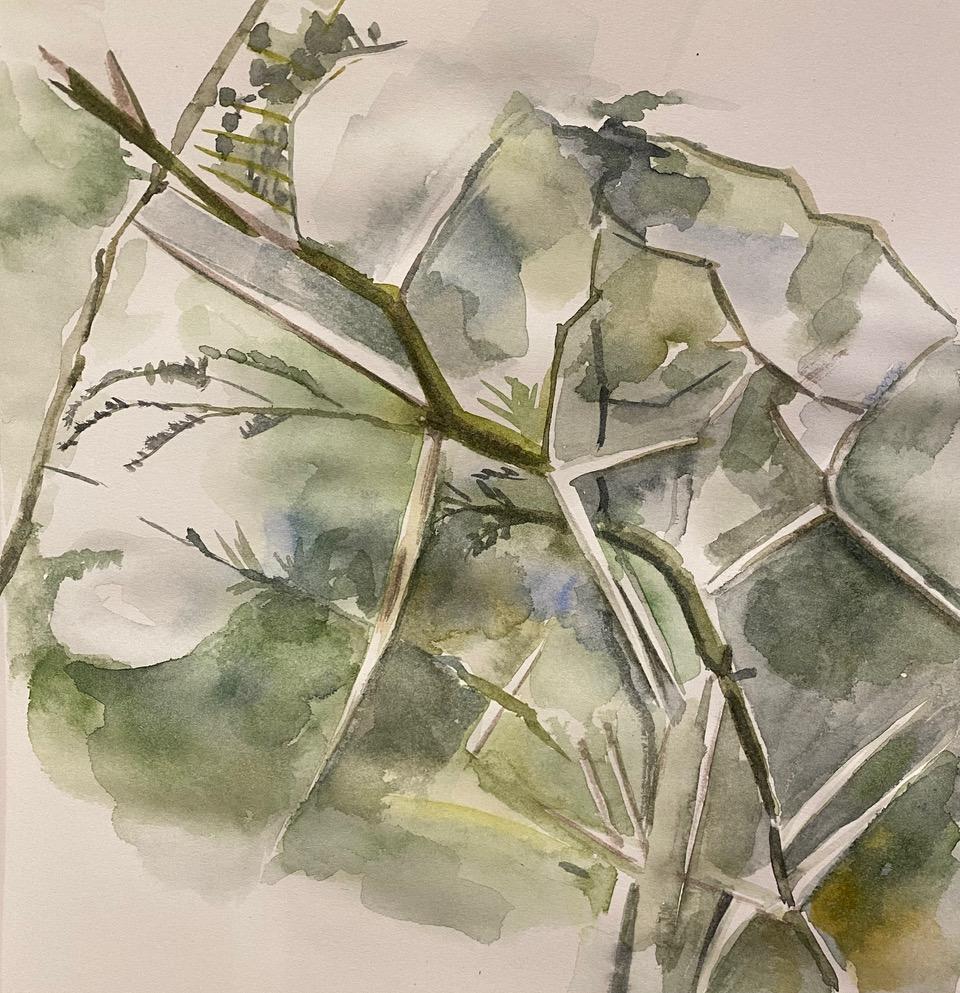Gideon Kondjeni makes high-quality charcoal from thorny Acacia trees invading his farm in central Namibia. He sends it six thousand miles north to Europe and Scandinavia where Kurdish and Indian restaurants depend on his artisanal fuel to keep their traditional ovens glowing.
As Gideon and his fellow farmers show, one of the best ways to keep invasive species under control is to create markets for them.
This is easier when the animals or plants have an intrinsic value, such as edible fish or sought-after timber, but more difficult when dealing with, say, knotweed.
Fortunately for those countries where tree species, such as Acacia, run rampant, the bushes produce quality charcoal that fetch good prices on global markets.
Iron smelting
Charcoal, once essential for iron smelting (see box), is now consumed in great quantities for cooking — home barbecues and in restaurants. Some ethnic eateries provide a ready market, as do tea houses in the Middle East that favour charcoal, rather than gas, for its authenticity. The current fashion for “fire” kitchens in western restaurants has further boosted demand.
Much of the cooking charcoal on world markets uses wood from threatened forests and is highly damaging to those ecosystems. Fuel produced from invasive species can be good for habitats while providing cash for rural people in developing economies.
Namibia, formerly German Southwest Africa, has shown the way. Its predominantly savannah countryside has few indigenous trees. The thorny Acacias from northern Africa (Acacia mellifera / Senegalia mellifera and Acacia reficiens / Vachellia reficiens) are now invasive throughout the country. This harms biodiversity and the trees absorb precious rainfall before it filters into underground reserves. What’s more, the thorny trees form impenetrable thickets that restrict the passage of wild animals, such as antelope and cheetahs, and make livestock farming difficult.
What is charcoal?
Charcoal is the carbon residue left when plant matter is strongly heated in the absence of air — essentially, baked in an airless oven. When lit, charcoal burns hotter than wood and is cleaner, releasing only heat, water vapour and carbon dioxide.
High-quality charcoal is made from hard wood. In ancient Britain, colliers would harvest wood, such as Hazel, from coppiced (regrown) woodland. This would be packed into earth pits, lit and covered with mud or clay, forming an oven and excluding air. After some days, the dried mud was removed revealing the charcoal. Similar methods were used all over the world.
Modern metal kilns are far more efficient, emit fewer noxious gases, and enable the capture of valuable by-products, such as wood tar. But these kilns are less affordable for artisanal charcoal makers who set up their earth kilns near the source of the wood.
BBQ charcoal is sold as “lump wood”, which resembles the original trunks and branches. Charcoal dust and waste from sorting and packing is turned into briquettes by mixing the granules with starch and pressing the mixture into an oval shape. Briquettes can be made from agricultural waste, such as maize husks, but their heat output is less than that from hardwood.
Farm waste is increasingly being used to produce bio-char (see below).
Activated charcoal, used to purify liquids, is made by treating wood charcoal with oxygen. This creates micro pores on the surface, providing a very fine filter to remove impurities such as chlorine in water.
Sparse
But this sparsely populated land — 2.6 million people in a country 1.5 times bigger than France (Pop: 65 million) — has turned the encroaching thorny thickets into a commercial opportunity. Farmers use the dry season to make charcoal and sell it to CARBO Charcoal Namibia which grades, bags and exports the product worldwide. CARBO helps producers get certification to Forest Stewardship Council (FSC) standards, smoothing the way for exports to Europe where proof of compliance is required by distributors. The FSC label provides a guarantee that the charcoal is made from environmentally acceptable wood and workers are well treated by employers.
The Namibian success is being replicated in neighouring South Africa where Australian acacia and eucalyptus species, especially Acacia melanoxylon, are rampant, harming ecosystems and damaging watersheds. Melenoxylon, known as Blackwood, is a large tree that can produce an attractive timber used in cabinet making and flooring. But much of the Blackwood is poor quality and used mainly as firewood.
Good cooking
Not all invasive species make good cooking charcoal, which requires thick branches to produce substantial lumps that will provide intense heat for extended periods. But there is hope that smaller invasive shrubs could be used for agricultural charcoal called bio-char. When combined with nutrients, such as chicken manure, this granulated charcoal makes an excellent organic fertilizer and soil improver fast finding favour with farmers and horticulturalists.
Gideon and his fellow Namibian colliers are making good headway against the fast-growing Acaci bushes. They know a lifetime of work — and fortunately, some cash — lies ahead of them as they battle the thorny invader.
